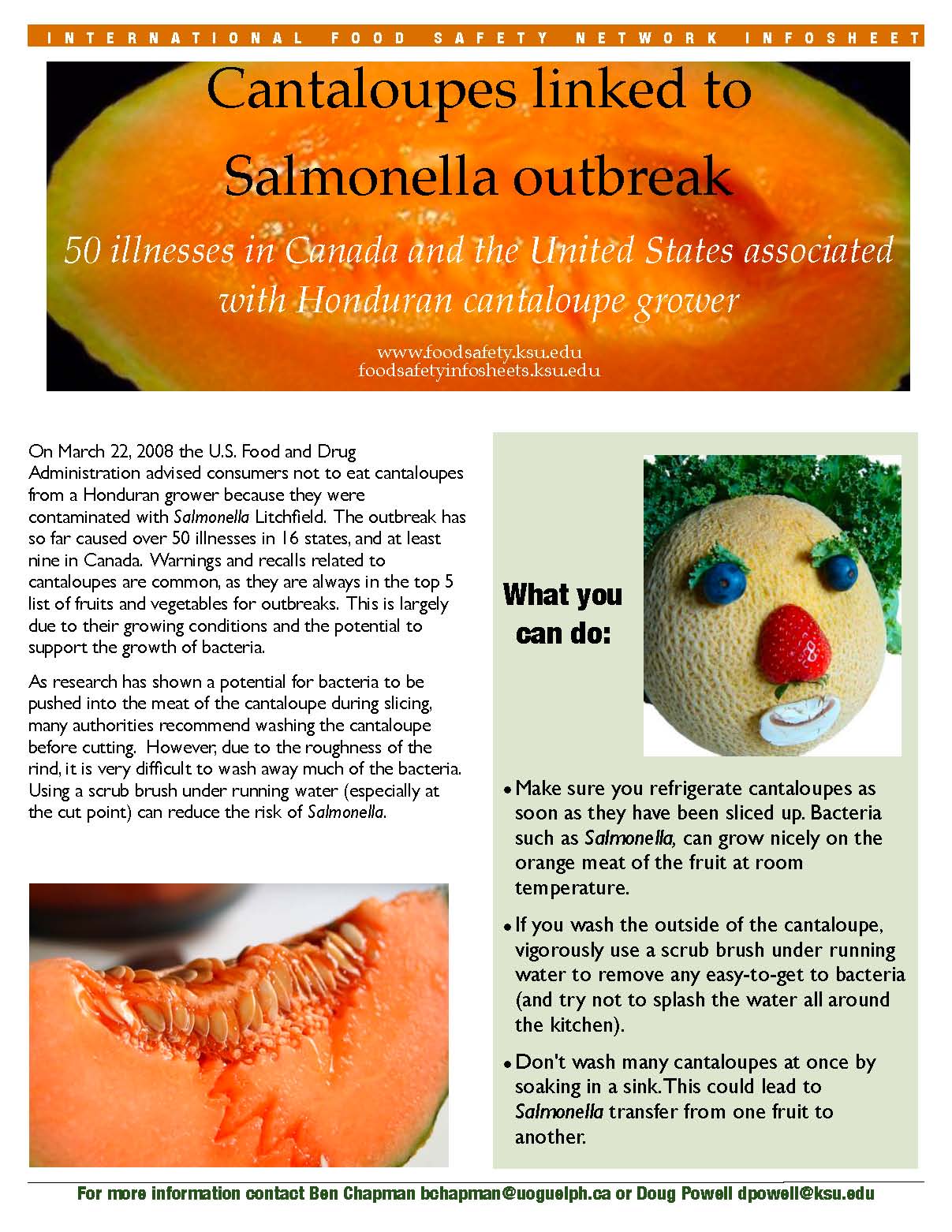Contact: Dr. Doug Powell, dpowell@ksu.edu
785-317-0560
barfblog.com
bites.ksu.edu
 Posting graphical, concise food safety stories in the back kitchens of restaurants can help reduce dangerous food safety practices and create a workplace culture that values safe food.
Posting graphical, concise food safety stories in the back kitchens of restaurants can help reduce dangerous food safety practices and create a workplace culture that values safe food.
It’s the first time that a communication intervention such as food safety information sheets have been validated to work using direct video observation in eight commercial restaurant kitchens.
“The food safety messages we’ve looked at are as effective as those ‘Employees must wash hands’ signs in bathrooms.,” said Dr. Douglas Powell, an associate professor of food safety at Kansas State University and one of the co-authors on a new paper in the Journal of Food Protection. “They just don’t work.”
Powell and then graduate student, Ben Chapman, now an assistant professor of food safety at North Carolina State University, came up with the idea for food safety infosheets to promote discussion and improve food safety behaviors while playing hockey at the University of Guelph in 2003.
“Chapman and I were playing hockey a lot,” says Powell, “and there was a bar and restaurant that overlooked the one ice surface where we often engaged in after-hockey food safety meetings with our industry, provincial and federal government colleagues. We had all this food safety information, and the manager of the bar around 2003 was into food safety, so we thought, if daily sports pages are posted above urinals and on the doors of washroom stalls, why not engaging food safety information?”
As part of his PhD research, Chapman partnered with a food service company in Canada and placed small video cameras in unobtrusive spots around eight food-service kitchens that volunteered to participate in the study. There were as many as eight cameras in each kitchen, which recorded directly to computer files and later reviewed by Chapman and others.
The work built on other direct food safety observational studies conducted at Kansas State University and published in the British Food Journal in 2009.
Food safety inforsheets, highlighting the importance of handwashing or preventing cross-contamination, for example, were then introduced into the kitchens, and video was again collected. The researchers found that cross-contamination events decreased by 20 per cent, and handwashing attempts increased by 7 per cent.
 Since September 2006 over 150 food safety infosheets have been produced and are available to anyone at www.foodsafetyinfosheets.com. The website has had a recent redesign, adding a search function, automatic email alerts and RSS feeds.
Since September 2006 over 150 food safety infosheets have been produced and are available to anyone at www.foodsafetyinfosheets.com. The website has had a recent redesign, adding a search function, automatic email alerts and RSS feeds.
Katie Filion, who coded much of the video as an undergraduate student researcher, has moved from Canada and is now completing a Master’s degree with Powell at Kansas State University. She has just returned from a year of research with the New Zealand Food Safety Authority helping to design a national restaurant inspection disclosure system.
Dr. Tanya MacLurin, who collaborated on the research, was born on a farm/ranch in Kansas and received all her degrees from Kansas State University before joining the School of Hospitality and Tourism Management at the University of Guelph in 1991, where she subsequently collaborated with Powell.
The study, “Assessment of food safety practices of food service food handlers : testing a communication intervention” was authored by Dr. Ben Chapman of North Carolina State University, Dr. Douglas Powell and Katie Filion of Kansas State University, and Tiffany Eversley and Tanya MacLaurin of the University of Guelph in Canada. The study is published in the June issue of the Journal of Food Protection.
“Assessment of Food Safety Practices of Food Service Food Handlers: Testing a Communication Intervention”
Authors: Benjamin J. Chapman, North Carolina State University; Douglas A. Powell, Katie Fillion, Kansas State University; Tiffany Eversley, Tanya MacLaurin, University of Guelph
Published: June 2010, Journal of Food Protection
Abstract: Globally, foodborne illness affects an estimated 30% of individuals annually. Meals prepared outside of the home are a risk factor for acquiring foodborne illness and have been implicated in up to 70% of traced outbreaks. The Centers for Disease Control and Prevention has called on food safety communicators to design new methods and messages aimed at increasing food safety risk-reduction practices from farm to fork. Food safety infosheets, a novel  communication tool designed to appeal to food handlers and compel behavior change, were evaluated. Food safety infosheets were provided weekly to food handlers in working foodservice operations for 7 weeks. It was hypothesized that through the posting of food safety infosheets in highly visible locations, such as kitchen work areas and hand washing stations, that safe food handling behaviors of foodservice staff could be positively influenced. Using video observation, food handlers (n ~ 47) in eight foodservice operations were observed for a total of 348 h (pre- and postintervention combined). After the food safety infosheets were introduced, food handlers demonstrated a significant increase (6.7%, P , 0.05, 95% confidence interval) in mean hand washing attempts, and a significant reduction in indirect cross-contamination events (19.6%, P , 0.05, 95% confidence interval). Results of the research demonstrate that posting food safety infosheets is an effective intervention tool that positively influences the food safety behaviors of food handlers.
communication tool designed to appeal to food handlers and compel behavior change, were evaluated. Food safety infosheets were provided weekly to food handlers in working foodservice operations for 7 weeks. It was hypothesized that through the posting of food safety infosheets in highly visible locations, such as kitchen work areas and hand washing stations, that safe food handling behaviors of foodservice staff could be positively influenced. Using video observation, food handlers (n ~ 47) in eight foodservice operations were observed for a total of 348 h (pre- and postintervention combined). After the food safety infosheets were introduced, food handlers demonstrated a significant increase (6.7%, P , 0.05, 95% confidence interval) in mean hand washing attempts, and a significant reduction in indirect cross-contamination events (19.6%, P , 0.05, 95% confidence interval). Results of the research demonstrate that posting food safety infosheets is an effective intervention tool that positively influences the food safety behaviors of food handlers.
